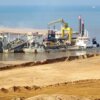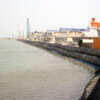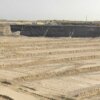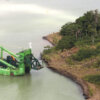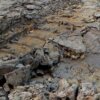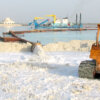Dredging like most industries has specific terminologies which describe abroad range of activities and materials used during operations.
Some of the terminology that is used in dredging includes:
- Bearing capacity of a foundation is the maximum load that can be applied on a foundation, before failure or uncontrolled deformations occur.
- Bunds are constructed to create stability of existing subsoils, slope angles and water levels to ensure the integrity of the reclamation area.
- Bulking occurs when the in-situ density of the material within the borrow area is not equal to the density achieved within the reclamation area.
- The properties of carbonate sand are different than more commonly used quartz sand and its behaviour must be considered when using it for fill.
- The density of a soil influences the stability of a land fill and should be carefully measured in relation to the ultimate purpose of the fill.
- Losses of fill can occur for several reasons and can result in not meeting the quantity of fill required for the dredging operation.
- Mud waves may occur when the subsoil of a reclamation area is soft, with low shear strengths and can result in inadequate fill mass properties.
- The permeability of the fill mass influences the drainage capacity of the site and may sometimes require artificial drainage systems.
- Shear strength is the strength of a material to withstand the type of yield or structural failure where the material or component fails in shear.
- Slope stability needs to be analysed in certain cases to ensure that the threat of slope failure either in the short or long term will be limited.
- Soft clays or soft silts in the reclamation area will become soft slurry which can experience significant bulking followed by consolidation.
- Stiff clays or silts can be dredged by backhoe, trailing suction hopper or cutter suction dredgers which will influence the properties of the material.
- Stiffness of subsoil and fill will define the deformation or strain which occurs during and after the construction of a reclamation site.
- Strength of the fill mass will determine its bearing capacity and slope stability and effects the fill mass’s ability to bear the weight of foundations.
- Subsoils are found immediately under the surface soils and cover a wide variety of properties and show very different behaviours.



